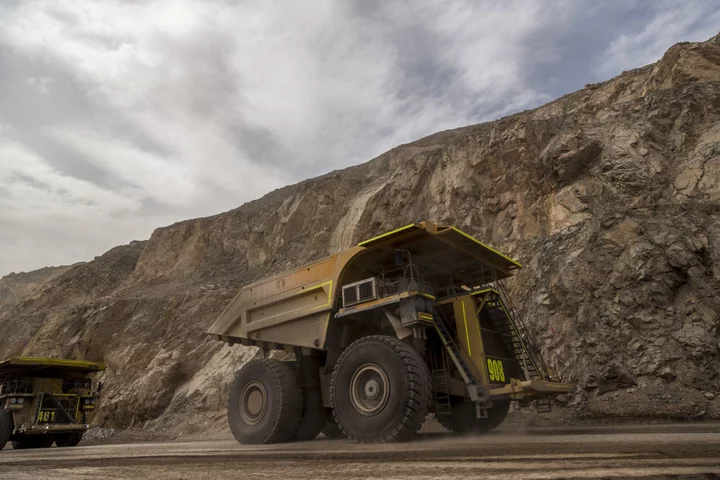
Alibaba unit ordered to pay NetEase $7.2 million over game copyright
By Josh Ye HONG KONG (Reuters) -A Chinese court has ordered an Alibaba Group unit that developed the hit mobile
2023-05-24 20:57

Car seats and baby formula are regulated. Is social media next?
The U_S_ Surgeon General is warning there is not enough evidence to show that social media is safe for young people — and is calling on tech companies, parents and caregivers to take “immediate action to protect kids now.”
2023-05-23 17:20

This is what cannabis does to your body minute by minute
Debates around the legalisation of cannabis have existed for years, with cannabis currently considered a class B drug in the UK. This means you can be prosecuted with up to five years in prison or a fine of up to £2,500 if you're found in possession of it. Different factors can affect how cannabis will affect you. For example, smoking weed will meant the effects kick in a lot faster than if you were to take an edible. Age, height, weight, and tolerance levels can also change how you experience the effects of cannabis. However, here's a quick breakdown of how cannabis effects you, minute-by-minute: It can take anywhere between 2 and 10 minutes for the effects of smoking weed to kick in. However, according to Healthline if you take an edible, you could be waiting for half an hour to two hours before you start to feel the effects. One of the first effects you'll begin to feel is an increase in pulse rate. WebMD suggests that your heart rate can rise by 20 to 50 bears from the normal rate of 50 to 70 bears per minute. Your heart rate can stay at the increased rate for up to 3 hours after you use cannabis. Next, the blood vessels in your eyes will dilate, likely turning your eyes red as a result. If you smoked the cannabis, the THC (the main psychoactive compound in cannabis) will be fully absorbed into your blood around the 20-minute mark. However, if you took an edible this takes longer due to the THC needing to be absorbed by your liver. The body's neural chemistry can be altered once the THC is fully settled in your system, stimulating the part of your brain that responds to pleasure. This releases dopamine, resulting in the relaxed state often associated with smoking weed. However, some individuals can also feel anxious and have a panic attack as a result. Around this time is when you'll be hit with the 'munchies'. This is because the THC finds the olfactory bulb (which impacts your sense of taste and smell) in you brain, and can convince you that you're hungry, even if you're not. Roughly 30-minutes in is when the effects reach its peak, lasting up to five or six hours. You may begin to feel sleepy or confused, as well as getting the giggles. Depending on the strain of THC used, these effects can last longer, resulting in lasting impaired judgement. Although the effects mostly wear off within a few hours, traces of cannabis can still be prevalent in a urine test two or three days later. Sign up to our free Indy100 weekly newsletter Have your say in our news democracy. Click the upvote icon at the top of the page to help raise this article through the indy100 rankings.
2023-09-29 20:18

Maui wildfires deadliest in a century after death toll hits 89
By Mike Blake and Marco Garcia KAHULUI, Hawaii (Reuters) -The death toll from the Maui wildfires is now at 89,
2023-08-13 10:59

MSSP ACOs Leveraging Lightbeam Achieved a Remarkable $509M in Generated Savings in PY 2022
DALLAS--(BUSINESS WIRE)--Sep 20, 2023--
2023-09-20 23:22

Biden Whittles Offshore Oil Leasing Plan to Record-Low Level
The Biden administration unveiled plans Friday to hold three auctions for offshore drilling rights over the next five
2023-09-30 02:17

Why is PewDiePie banned on Twitch 'again'? Purple platform suspends former YouTube king during infinity stream
Twitch, known for its lack of transparency, previously banned PewDiePie's channel in May without any explanation
2023-07-18 15:17

Is Starfield Getting DLC?
Players can't get enough of Starfield. Find out if the game will get DLC.
2023-09-19 01:54

Winona Expands Reach to Minnesota, Nebraska, Idaho, and Indiana, Offering Innovative Menopause Telehealth Services
AUSTIN,Texas--(BUSINESS WIRE)--Aug 21, 2023--
2023-08-21 22:16

Allison Transmission and Biffa Honored With Best Fleet Management Award for Partnership to Reduce Fuel Consumption and Emissions
INDIANAPOLIS--(BUSINESS WIRE)--Jun 27, 2023--
2023-06-27 20:53

BHP Urges Nations to Avoid Critical Minerals Protectionism
BHP Group Ltd. Chief Executive Officer Mike Henry has warned too much government intervention in global critical minerals
2023-06-27 08:17

Big Tech's core businesses face overhaul under EU tech rules
By Supantha Mukherjee STOCKHOLM The EU Commission on Wednesday designated 22 services of six major tech companies as
2023-09-06 17:55
You Might Like...

Exclusive-Amazon in talks to become anchor investor in Arm ahead of IPO -sources

Island Appoints Respected Industry Leader Steve Tchejeyan as President

How hidden device users can protect themselves ahead of national emergency alert test

US Says Ex-Safety Chair Misused Thousands of Dollars for Airfare, Furniture

Threads: What it’s like to use Instagram’s new Twitter rival

3HOUSE.io Launches Upgraded Platform with New Trending Topics Feed and Portfolio Tracking Tools

Nvidia stuns markets and signals how artificial intelligence could reshape technology sector

US online sales in Amazon's Prime Day rise to $12.7 billion - report
